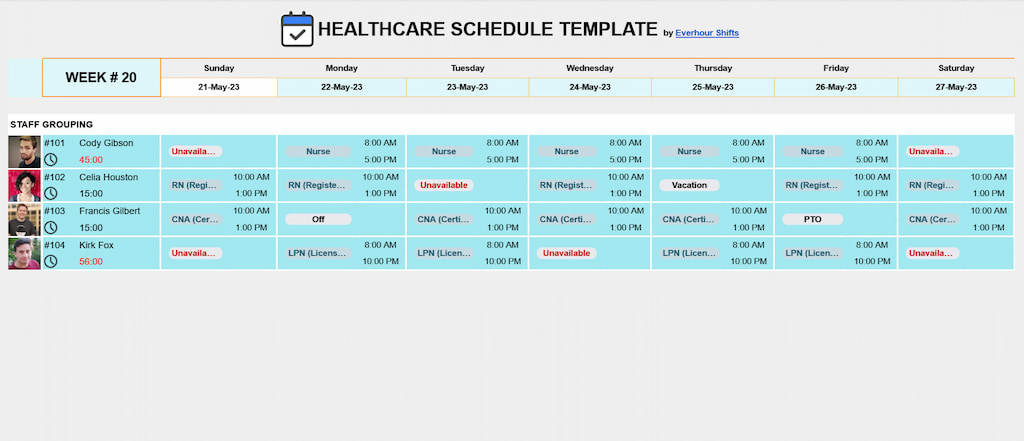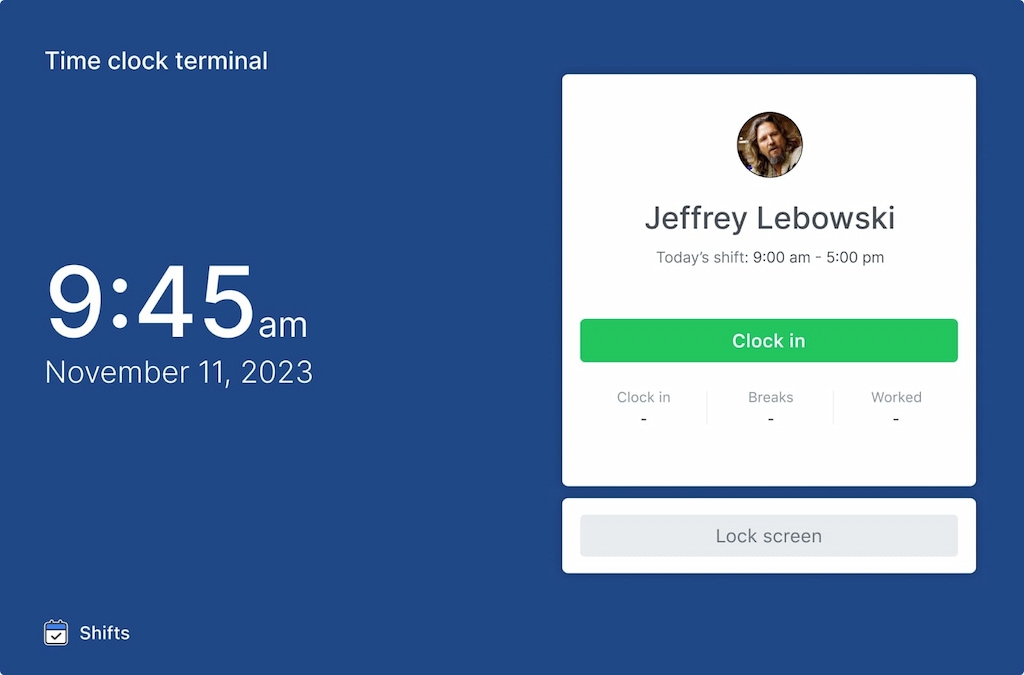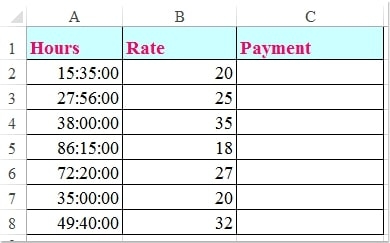Nurse Schedule Template: How to Streamline Healthcare Staffing & Improve Efficiency

Free employee shift scheduling apps are essential in healthcare, where knowing how to schedule shifts is critical in the world of healthcare. A nurse schedule template and hospital shift schedules are crucial in ensuring the efficient operation of hospitals and clinics where 24/7 service provision is required. However, creating nurse schedules extends well beyond managing the workforce—they ensure that patient care is never compromised.
What are Nurse Schedule Templates?
Nurse schedule templates are pre-formatted documents or platforms that help managers plan and organize the work hours of their nursing teams. These schedules must take into account the various shifts required in a healthcare environment, including day, evening, and night shifts (including an NOC shift), to ensure patients receive uninterrupted care. But nurse schedules must also consider the needs and preferences of the staff, as many will have personal commitments that will determine their suitability for particular shifts at certain times.
Typical nurse shift types
Before we delve any deeper into the world of nurse schedule templates, it’s important to understand what a typical nurse schedule looks like. Nurses tend to work in shifts, which vary by hospital or clinic. However, the most common shift patterns for nurses are 8-hour shifts, 12-hour shifts, rotating shifts, and on-call shifts.
8-hour shifts
This work schedule divides the day into three eight-hour shifts: day, evening, and night. Nurses working this schedule tend to work five days a week, but this isn’t always the case. The day shifts start early in the morning and finish at some point in the afternoon the night shift starts late in the evening and finishes early the next morning.

12-hour shifts
12-hour shifts divide each 24-hour period into two shifts: day and night. These shifts are long, so nurses who take these shifts work fewer days each week, typically three.

Rotating shifts
Rotating shift schedules change from one shift to another (day, evening, and night) on a rotating basis. In most cases, nurses cover each shift type at some point during each month. Rotating shifts tend to be between eight and 12 hours long, and employers try to distribute them evenly between staff members.
On-call shifts
Some nurses work on-call, which means they are not scheduled for regular shifts but are available for work if required. On-call shifts are common in areas of healthcare where demand for nurses fluctuates.
Why Use Nurse Shift Schedule Templates or Apps?
Nurse schedule templates are a critical component of effective hospital or clinic management. Many healthcare organizations are turning to nurse shift scheduling templates to improve efficiency, which offers the following benefits:
💪 Reduce scheduling errors
These tools help to reduce scheduling errors, which can lead to staff shortages, which force some staff members to overwork to ensure patients receive the care they need. By using a template or an app, managers can visualize the schedule, spot any gaps or overlaps, and make necessary adjustments to ensure 24/7 provision.
⌛ Save time
Nurse schedule templates and apps also save time that can be better spent elsewhere. Instead of sitting down to create a manual shift from scratch every week or month, managers can modify a pre-made template or update an app, which significantly speeds up the process.

😊 Improve staff satisfaction
Nursing is a stressful job, and it’s crucial for hospitals and clinics to ensure their workforce has job satisfaction. Surveys indicate that while job satisfaction levels are generally high, stress and burnout are problematic. Using nurse schedule templates and apps ensures nurses receive clear, fair, and (as much as possible) predictable schedules. Knowing their shifts in advance allows nurses to plan their personal lives around their work commitments, which leads to a more positive and productive work environment.
🤝 Increase transparency
Using a template or an app also increases transparency, meaning everyone can see who is working and when they are working to reduce the perception that some team members are receiving preferential treatment. Ensuring transparent schedules helps promote a sense of shared responsibility and teamwork, which benefits nursing staff and their patients, who receive better care from unified nursing teams.
🔄 Facilitate flexibility
Nurse schedule apps usually have features allowing staff members to swap shifts or request time off on the platform. These features give nurses more flexibility but allow managers to view and manage these changes to ensure they do not interfere with patient care.
📈 Improve patient care
Finally, the use of nurse schedule templates and apps can lead to higher levels of patient care. By ensuring that there are always enough nurses on duty and that the nurses working are not overworked due to scheduling issues, hospitals, and clinics can ensure patients receive the care they deserve.
How to Create a Nurse Schedule Template
Creating a nurse schedule template from scratch may sound quite daunting, but this step-by-step guide will demonstrate that it’s a relatively easy and straightforward process:
1️⃣ Choose a template platform
First, you need to choose the platform you want to use to create the nurse schedule. Many opt for Microsoft Excel or Google Sheets. To save you time, Shifts by Everhour has created a Google Sheets healthcare template.
2️⃣ Select a template
If you’d prefer to create your own template from scratch, simply navigate the template gallery and select the most suitable template. The ‘Employee shift schedule’ template is the most suitable option in Google Sheets.
3️⃣ Customize the template
Next, customize the template so it’s tailored to your hospital or clinic. For example, add the name of your organization, adjust the dates, and change the names of the staff members.
4️⃣ Add hourly rates
If you’re planning to keep track of payroll within this template, make sure to add a section for staff members’ hourly rates to track labor costs. However, be mindful that doing this means staff members can see others’ rates.
5️⃣ Create the schedule
Using the information you’ve gathered about staff availability on certain dates and at particular times, populate the schedule for the next week or month. It’s important to balance the workload evenly among staff so no individual staff member is overworked. As much as you can, try to consider their personal needs and preferences or risk employees feeling undervalued.
6️⃣ Share the schedule with staff members
Once you’ve created the schedule, share it with the relevant staff members. If you’ve opted for Google Sheets, you can also control the level of access each staff member has. For example, make sure to set the access level to ‘viewer’ to ensure only you can make edits. If you’re happy for staff to leave comments on the schedule, set the access level to ‘commenter.’
6 Tips for Optimizing Nurse Shift Schedules
Creating a nurse shift schedule is a great first step, but a truly effective schedule is optimized to ensure staff satisfaction and the highest levels of patient care. Below are six tips to help you optimize your hospital shift schedule:
Use shift scheduling software
Creating manual templates on Excel or Google Sheets is fine, but you can step your scheduling game up a notch by using shift scheduling software. Shifts by Everhour is hospital shift scheduling software for shift-based teams. Simplify the scheduling process by creating and managing schedules that are optimized for maximum efficiency.
But that’s not all—Shifts by Everhour also allows employees to use their mobile phones to clock in and out, track working hours, and view schedules whenever they are, as long as they have an internet connection. Employees can also request time off, and managers can track time off and vacation to create shift schedules that take everyone’s needs into account.
The beauty of Shifts is that it’s feature-rich—not only can you use it to schedule shifts, but you can also utilize mobile clock-in and clock-out, turn any device into an employee time clock with Kiosk, and monitor attendance and payroll with timesheets in one centralized place. So if you’re searching for an all-in-one solution that allows you to schedule shifts, track time, handle payroll, and manage teams, Everhour is the tool for you!

Take staff needs and preferences into account
Taking staff shift preferences into account when creating nurse schedules will do more than make them feel valued and listened to—it’ll boost job satisfaction and reduce staff turnover. Nurses have personal lives, family responsibilities, social plans, and individual shift preferences like everyone else. Recognizing and accommodating these preferences wherever possible will help create a positive work environment.
While accommodating all staff members’ preferences may not always be possible, making a clear effort to do so has benefits. Nurses who feel they have more control over their schedules generally have higher job satisfaction and are less likely to leave for other jobs.
Make contingency plans
Unexpected events, such as illness or family emergencies, may mean staff cannot make it to their shift. While unfortunate, these events can disrupt the shift schedule and create gaps during critical hospital shift change times. For this reason, having a contingency plan in place is vital. Many hospitals will have on-call nurses who can fill in for the absent nurse to ensure patient care continues uninterrupted.
Review and update the shift schedule
Regularly review and update the nurse schedule to ensure it reflects changes in staff availability, the needs of the hospitals, and other factors. The last thing you need is staff checking a schedule that isn’t up to date, as they may end up missing shifts or coming in late, meaning the nurse shift change process is disrupted.
Ensure adequate rest
Nurses tend to work long hours on their feet, and their roles can be extremely stressful. For this reason, it is vital that they are given adequate rest periods to relax and recharge. Failure to do so will lead to problems with personal well-being and performance, which has a knock-on effect on the quality of patient care. Avoid scheduling consecutive night shifts or overtime as working these shifts is particularly damaging to the health of workers.
Prioritize effective communication
Clear and timely communication regarding shift schedules is essential. Inform staff of their schedules as far in advance as possible, as this allows them to plan their personal lives around their shifts. It’s also important to promptly update staff if the shift schedule changes to ensure everyone is on the same page.
Nurse Schedule Template: In Summary
Effective nurse shift scheduling is a vital component of efficient hospital management and high-quality patient care. It’s important to remember that nurse schedule templates and hospital shift schedules are not only administrative tools. Done right, they support job satisfaction and boost employee retention.
Creating a nurse schedule template requires careful consideration of staff preferences, the needs of the hospital or clinic, and the unique challenges facing the healthcare environment. For those who require a fast and efficient scheduling system, a tool like Shifts by Everhour is the solution. It allows for the easy creation, duplication, customization, and sharing of schedules and offers features that increase transparency, facilitate flexibility, and promote better team communication.
The world of healthcare is fast-paced and stressful, as high-quality 24/7 service provision is required. Effective nurse schedules are crucial to creating a supportive work environment where everyone feels their needs are being met.
If you’re looking for a seamless way to improve shift planning, Shifts by Everhour is the perfect healthcare scheduling software system. With features like real-time monitoring, easy scheduling, and mobile accessibility, managing your workforce has never been simpler.

